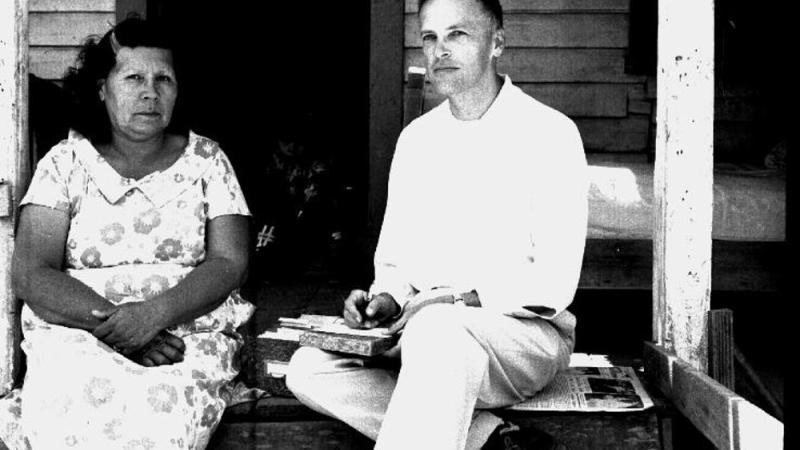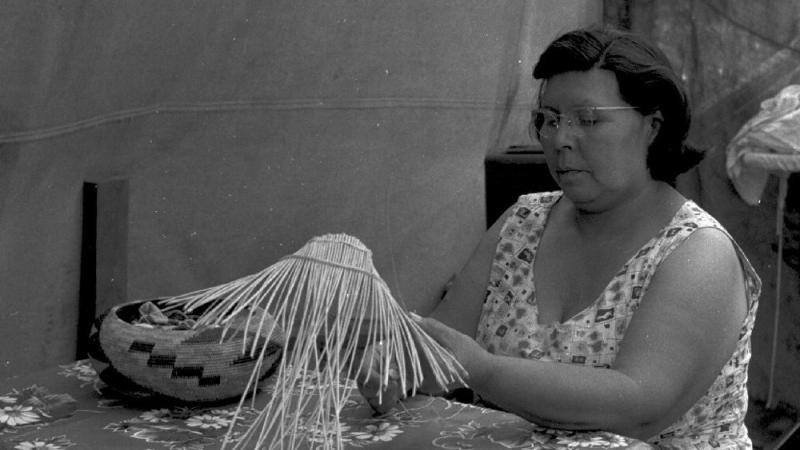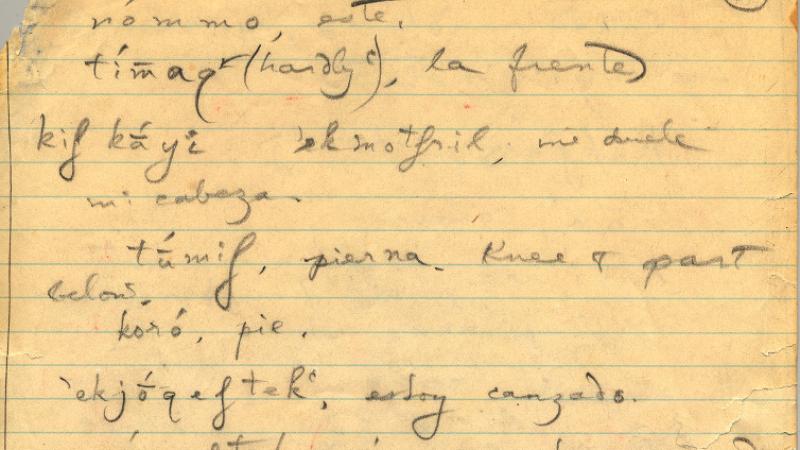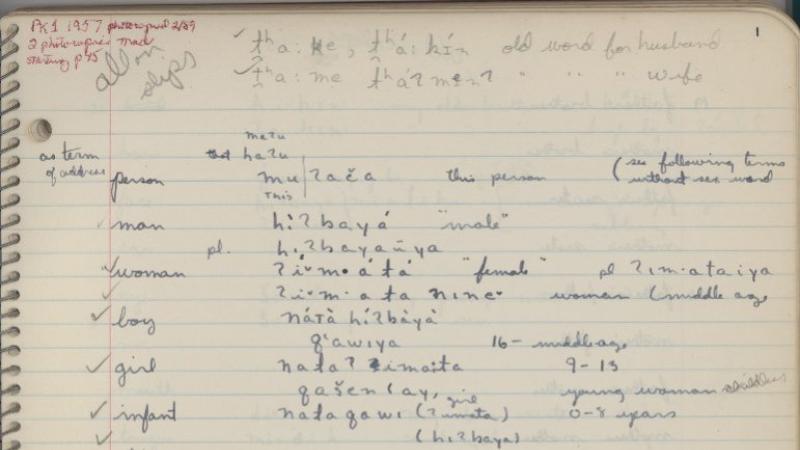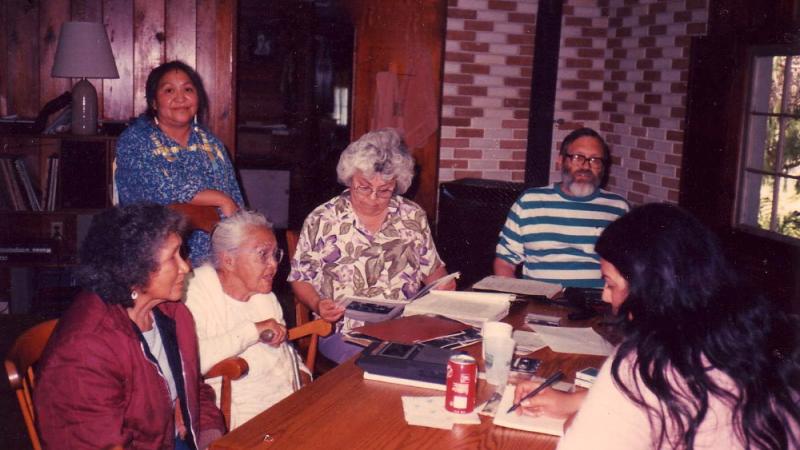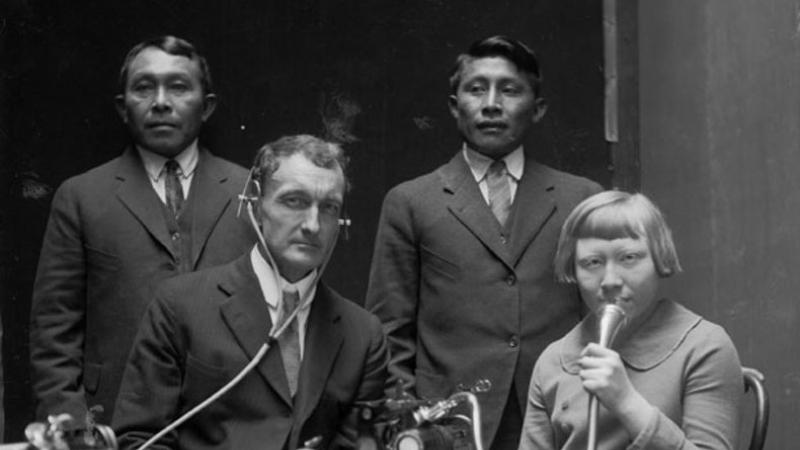Tune In Tuesdays: Berkeley Indigenous Language Resources
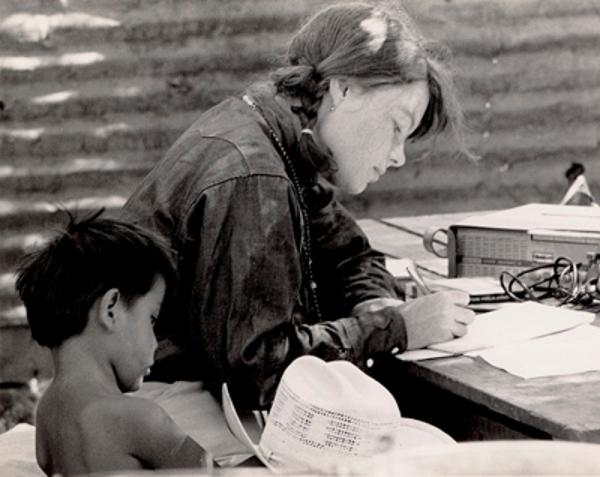
Leanne Hinton works with Havasupai consultants in 1965.
Courtesy of the California Language Archive

Leanne Hinton works with Havasupai consultants in 1965.
Courtesy of the California Language Archive
This post is part of our “Tune In Tuesdays” series, highlighting some of the projects NEH has supported to preserve and provide access to rich audiovisual materials important to humanities research, teaching, and the public interest.
The third biggest state in the United States, California is also historically the most linguistically diverse: two centuries ago, people living in what is now California spoke about 90 languages, a third of the language families identified in all of North America. While coastal areas had the greatest density of languages, they were also invaded most intensely, and California’s indigenous languages were quickly endangered. Because of the risks of language extinction, linguists at the University of California, Berkeley, have been documenting endangered languages in the Western United States since 1901—a pressing affair since half of California’s indigenous languages no longer have native speakers. In the first half of the twentieth century, however, researchers could still find consultants born into “pre-contact” communities not yet inundated by European-American culture.
A 2007 Documenting Endangered Languages (DEL) grant from NEH helped to preserve and provide access to linguistic materials held at a number of Berkeley repositories. The California Language Archive collects materials held by the Survey of California and Other Indian Languages, the Berkeley Language Center, the Bancroft Library, and the Hearst Museum of Anthropology. The site features audio recordings and digital images of field notes, file slips, index cards, and other materials documenting 130 languages from California and nearby regions. For example, Alice Shepherd’s recordings of Wintu, a language from the upper Sacramento Valley of which there are no first speakers alive today, include songs, reminiscences, recitation of words and phrases, and stories. The Judy Crawford recordings of Mojave speakers feature songs, stories, and conversations such as an interviewee explaining how to make a baby cradle. The site also includes field notes, like those of Alfred L. Kroeber, who founded the Archaeological and Ethnographic Survey of California in 1901, and J.P. Harrington, a noted linguist who documented Chochenyo, an indigenous language spoken in the East Bay of San Francisco. The site is a boon to researchers, linguists, and tribal groups seeking to revitalize their ancestral languages. Check it out today!
